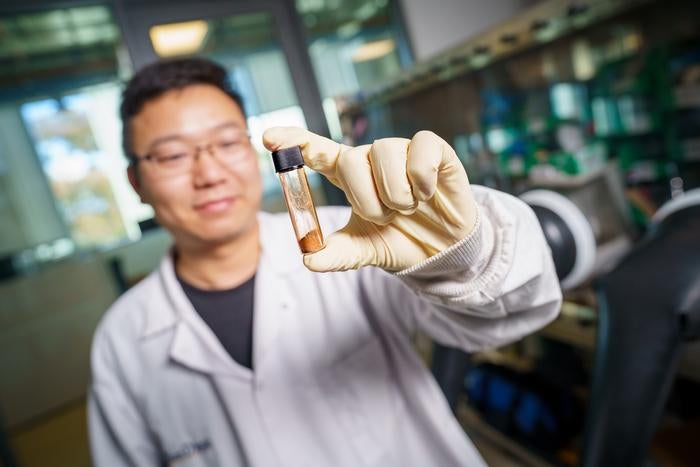New ‘healable’ material could lead to a battery revolution, creators say
Research could finally allow scientists to create solid-state batteries out of lithium and sulphur

A new “healable” material could lead to a battery revolution, the engineers behind it say.
Scientists have long been hoping to create solid-state batteries out of lithium and suphur. Such technology could be a much better alternative the existing lithium-ion batteries that currently power our phones, cars and much else besides, because they can store more energy and cost less.
Such batteries could store up to twice as much energy than conventional batteries. That would double the range of an electric vehicle without adding any more weight, for instance.
They would also use easily sourced material that would make them better for the environment and cheaper to make.
But those lithium-sulfur solid-state batteries have proven difficult because of the problems of making sulphur cathodes. The material is bad at conducting electrons, and they can expand and contract as they charge, meaning that they get damaged and work less reliably.
Now scientists have made a new cathode material, creating a crystal out of sulphur and iodine. That iodine makes the material far more conductive: 100 billion times more conductive than sulphur alone.
“We are very excited about the discovery of this new material,” said Ping Liu, a professor of nanoengineering and director of the Sustainable Power and Energy Center at UC San Diego. “The drastic increase in electrical conductivity in sulfur is a surprise and scientifically very interesting.”
What’s more, the crystal can be melted at a low temperature, under that of a hot cup of coffee. That means that it can be melted down after it is charged, and allow it to heal from the intense process of charging.
That should help address the problems of damage from repeated charge and use that have blighted the technology so far.
“The low melting point of our new cathode material makes repairing the interfaces possible, a long sought-after solution for these batteries,” said study co-first author Jianbin Zhou, a former nanoengineering postdoctoral researcher from Liu’s research group. “This new material is an enabling solution for future high energy density solid-state batteries”.
Researchers note that there is much yet to be done to make a solid-state battery that could be used in applications such as cars. But the new discovery helps bring us much closer to that being possible, scientists said.
“This discovery has the potential to solve one of the biggest challenges to the introduction of solid-state lithium-sulfur batteries by dramatically increasing the useful life of a battery,” said study co-author Christopher Brooks, chief scientist at Honda Research Institute USA. “The ability for a battery to self-heal simply by raising the temperature could significantly extend the total battery life cycle, creating a potential pathway toward real-world application of solid-state batteries.”
The findings are reported in a new paper, ‘Healable and Conductive Sulfur Iodide for Solid-State Li-S Batteries’, published in Nature.
Subscribe to Independent Premium to bookmark this article
Want to bookmark your favourite articles and stories to read or reference later? Start your Independent Premium subscription today.

Join our commenting forum
Join thought-provoking conversations, follow other Independent readers and see their replies